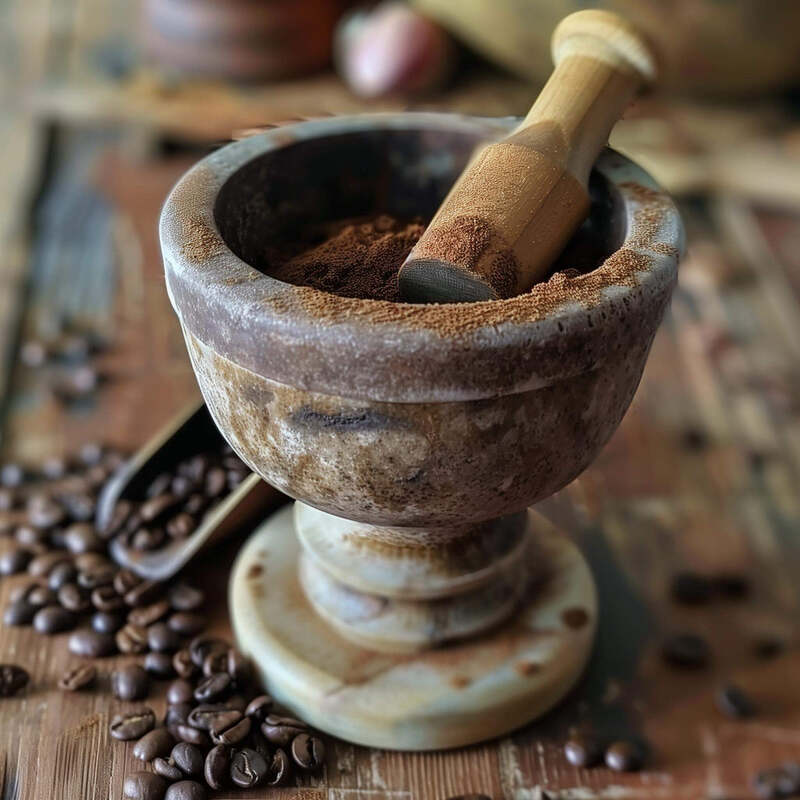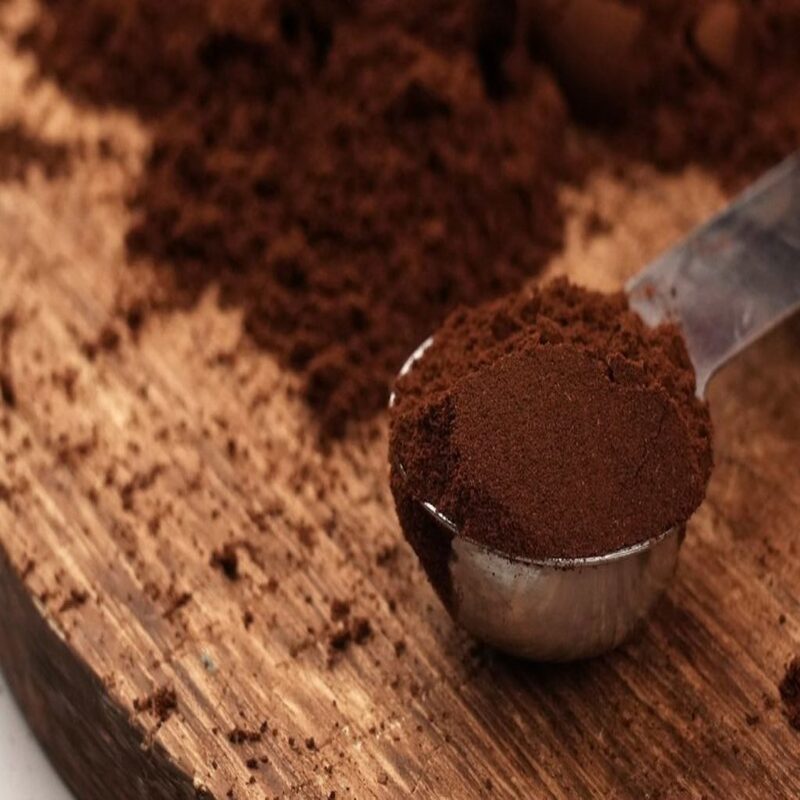Coffee lovers often find joy in brewing a perfect cup of coffee. However, having a coffee grinder isn’t always necessary for savoring great flavors. In many cases, you can efficiently grind coffee beans using tools that are commonly found at home. This article will explore multiple methods for grinding coffee beans without a grinder, providing you with versatile options.
Using a Mortar and Pestle
Traditional Tool with Modern Application
A mortar and pestle is an ancient tool that has stood the test of time. It can easily crush and grind coffee beans, making it an ideal alternative when you lack a grinder. To begin, simply add a small amount of coffee beans to the mortar. Choosing a manageable amount allows you to achieve a consistent grind. Furthermore, it reduces the effort you need to put in.
Next, take the pestle and press the beans down firmly. Afterward, use a twisting motion to break down the beans further. This allows for better control over your grind size. Maintaining a steady rhythm can enhance the uniformity of your grind. If you want a finer grind, continue crushing the beans for a longer duration.
After grinding, assess the coarseness of your coffee. If you prefer a finer texture, grind a bit longer. Yet, if you enjoy a coarser brew, a few quick presses should suffice. Overall, this method is not only effective, but it’s also therapeutic. The tactile experience of grinding coffee beans offers a sensory delight.
Benefits of Using a Mortar and Pestle
Using a mortar and pestle to grind coffee beans comes with several advantages. For one, this method is incredibly accessible. Most kitchens already have a mortar and pestle. Consequently, you don’t need to invest in additional gadgets. Another benefit is the fine control you have over the grind size. You can easily achieve the desired coarseness depending on your brewing method.
Moreover, grinding coffee beans manually adds a personal touch to your coffee-making process. This ancient ritual connects you with centuries of coffee aficionados. You can also control the quantity of beans you grind. This flexibility reduces waste and ensures fresh coffee.
Additionally, using a mortar and pestle is quiet. Unlike electric grinders that can be noisy, this method allows for a peaceful coffee-making experience. This quiet time can be a form of mindfulness, preparing you for the day ahead. Overall, this age-old method provides satisfaction, accessibility, and flexibility for your coffee needs.

The Rolling Pin Method
A Kitchen Essential
A rolling pin is a common kitchen tool, primarily used for flattening dough. However, it can also effectively grind your coffee beans. To get started, place your coffee beans inside a sealable plastic bag. Ensure that the bag is durable enough to withstand the pressure. A zip-top bag works particularly well, as it can be sealed tightly.
Next, lay the bag flat on a clean surface. Grab your rolling pin and press it down gently. Applying even pressure helps to crush the beans without spilling. You might want to use a back-and-forth motion to ensure even grinding. As you roll, check the consistency of the grind. If you prefer a finer grind, you’ll need to apply more pressure.
After grinding, carefully check the contents of the bag. You can repeat the process if the grind isn’t fine enough. This method allows you to get creative as well. You might choose different levels of pressure or rolling techniques to achieve your preferred texture. Each attempt can yield a slightly varied taste that adds excitement to your coffee experience.
Tips for Effective Rolling
To maximize the effectiveness of the rolling pin method, consider a few useful tips. First, it’s essential to keep the amount of coffee beans manageable. Grinding too many beans at once may lead to inconsistencies. A small batch ensures that you can achieve a uniform texture.
In addition, experiment with various levels of pressure. Sometimes, a light hand will do the trick, while other times, you may prefer a firmer grip. Also, consider grinding in bursts to prevent overheating the beans. Overheating can alter the coffee’s flavor profile.
Finally, don’t forget about the cleanup. After you finish grinding, you’ll want to clean your rolling pin and surface thoroughly. Coffee oils can linger, so a good wash will prevent flavor contamination in future baking. This method provides a new twist on how you can enjoy freshly ground coffee.

Using a Blender
A Multi-functional Appliance
Most kitchens house a blender, a versatile appliance for various culinary tasks. Surprisingly, it can also be used for grinding coffee beans. To start, place a small amount of coffee beans into the blender jar. Be cautious not to overfill; a smaller quantity will yield better results.
Choose the pulse setting to control the grinding process. This gives you more control over how coarse or fine the coffee will turn out. Blend briefly, checking the consistency frequently. The pulse method allows you to pause and assess the grind size without over-processing the beans.
After a few pulses, stop the blender to see how the coffee looks. If you prefer it coarser, blend for a shorter time. If finer grounds are your desired result, simply blend for a little longer. The versatility that a blender provides makes this method popular among coffee enthusiasts.
Cleaning the Blender
After using the blender, cleaning it requires your attention. The buildup of coffee oils can cling to the blades and container. To clean effectively, fill the blender halfway with warm soapy water. Blend this mixture on high for about 30 seconds. This will help lift any residual coffee grounds.
Next, carefully rinse the container and blades under warm running water. Make sure no oily residue remains. A thorough cleaning ensures that future uses do not carry over any coffee flavors. This method not only prepares coffee but also keeps your kitchen equipment in good condition.
As a side note, remember that using a blender can sometimes yield uneven grinds. Therefore, you may want to sift through the mixture after grinding. You can separate the coarser bits to achieve a more consistent ground coffee. Overall, blending coffee beans is convenient and practical, especially for quick processing.

Using a Food Processor
Another Kitchen Staple
A food processor is yet another kitchen appliance that can effectively grind coffee beans. If you have one, you’re in luck! Start by filling the processor bowl with a modest amount of beans. Just like other methods, filling it to a maximum level may lead to uneven grinds.
Next, secure the lid tightly and pulse the beans several times. The short bursts help you monitor the grind size closely. After several pulses, stop and check the consistency. If necessary, pulse again until you reach your preferred coarseness.
This approach gives you the flexibility to create your desired grind without too much effort. A food processor can help produce both coarse and fine coffee grounds effectively. However, it’s crucial to remember that over-pulsing can lead to a powdery consistency. Finding the right balance is key.
Advantages of a Food Processor
Using a food processor for grinding coffee offers several advantages. First, it delivers speed and efficiency. The powerful motor can handle larger quantities, unlike other methods. This is particularly useful if you’re entertaining guests or want to brew a large pot.
Moreover, food processors often have different attachments and settings. This versatility enables you to experiment with grind sizes more easily. You can also utilize a pulse function, providing you with added control over the outcome. Additionally, this method saves time compared to manual techniques.
However, keep in mind the importance of cleaning thoroughly. Coffee residue can affect the performance of your food processor. Therefore, always clean the bowl and blades after each use. In summary, this method is fast, efficient, and versatile, serving coffee enthusiasts well.

The Hammer Method
An Unconventional Approach
If you’re feeling adventurous, consider the hammer method for grinding coffee beans. This unconventional technique can provide an exciting twist. To start, place some coffee beans in a sealable plastic bag. A zip-top bag is ideal, as it will hold up against the pressure.
Next, lay the bag flat on a sturdy surface. Use a hammer or mallet and apply gentle taps to the bag. Start lightly to assess how the beans respond. You can gradually increase your pressure as you discover the right force needed.
Check the contents periodically to ensure that you’re achieving your desired grind size. It may take several taps to reach the right consistency. This method is excellent for those who enjoy hands-on activities. Additionally, it can be a stress-reliever, allowing you to pound away.
Precautions When Using the Hammer
While the hammer method is intriguing, some precautions are necessary. First, be sure to use a strong, sturdy surface. A fragile or uneven surface may cause issues. You want to maintain control during the grinding process to prevent spillage.
Also, be mindful not to hit the hammer too hard. Too much force can create a mess or even break the bag. Gradually applying pressure will lead to better results. Finally, always inspect the bag after grinding. Any small holes could lead to loss and mess.
In summary, while unconventional, the hammer method offers an engaging alternative for coffee lovers. Just remember to take necessary precautions for a safe and effective experience.

Conclusion: Unlocking Creativity in Coffee Grinding
In conclusion, grinding coffee beans without a grinder doesn’t have to be a daunting task. Various accessible methods can be utilized to achieve delightful results. From using a mortar and pestle to more unconventional techniques, you have options. Each method brings its unique benefits and offers a personal touch to the coffee-making experience.
Moreover, these techniques encourage creativity and resourcefulness in the kitchen. By stepping away from conventional appliances, you also connect with the age-old ritual of coffee preparation. Every cup becomes a celebration of your efforts, regardless of the method you choose.
Finally, remember that freshly ground coffee enriches the brewing process. Better flavor, aroma, and enjoyment await those willing to try these creative grinding techniques. What matters most is ultimately enjoying a delightful cup of coffee!
